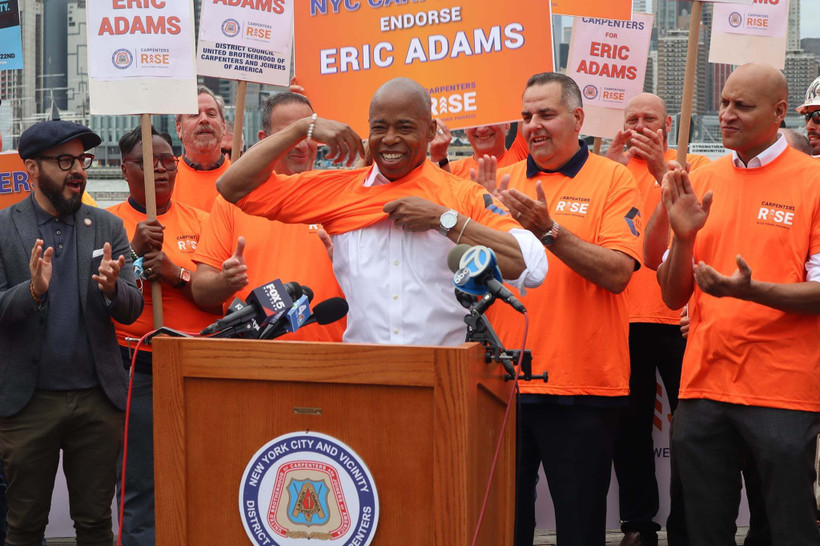The World’s Most Important Local Climate and Jobs Law is in Eric Adams’ Hands
Elected with real estate industry support, soon-to-be Mayor Adams faces a critical choice on New York’s landmark buildings emissions law.

Elected with real estate industry support, soon-to-be Mayor Adams faces a critical choice on New York’s landmark buildings emissions law.

I hope this article helped you better answer the question that guides all of our journalism: Who runs New York? Before you click away, please consider supporting our work and making more stories like this one possible.
New York state is standing at a crossroads for climate action. After passing one of the nation’s most ambitious climate laws in 2019, the state is lagging far behind on its targets, struggling to meet deadlines to build renewable energy and clean up its buildings and roads. Other states are closely watching our progress, making decisions about their own climate plans based on New York’s ability to implement this legislation.
As New York’s only statewide nonprofit news publication, we’ve been scrutinizing the state’s climate progress. Our journalism exists to unpack how power works in New York, analyze who’s really calling the shots, and reveal how obscure decisions shape ordinary New Yorkers’ lives.
But we can't do this work without your help. We rely on reader donations to help sustain our outlet, and every gift directly allows us to publish more pieces like this.
Our work has already shown what can happen when those with power know that someone is watching, with my reporting prompting a state investigation and fine for a major corporation. I have more story ideas than I can count, but only limited resources to pursue all the leads that come across my desk.
If you’re able, please consider supporting our journalism with a one-time or monthly gift. Even small donations make a big difference.
Thank you for reading.

Longstanding perks like premium-free insurance could be at risk due to a city budget crunch.
The campaign has created 64 public fundraising web pages for people to raise money on its behalf. But it didn’t disclose any intermediaries.
Roughly 60,000 children will lose vouchers over the next year without more funding.
Environmentalists have long charged that New York is falling short of its climate mandates. Now, they’re taking the state to court.
In rural New York, even some Republicans are frustrated as the administration halts $186 million in conservation payments to farmers.
A 2023 law is transforming the state power authority into one of New York’s biggest renewable developers. Some still want it to go further.
The state is pushing ahead on all-electric buildings, but a draft update to the building code leaves out other key recommendations from the state’s climate plan.
The state has yet to publish a building code update, promised in December, which should include requirements to phase out fossil fuel appliances in new homes.
The Bronx Community Foundation spent almost none of the funds it raised for victims of the 2022 Twin Parks apartment fire.